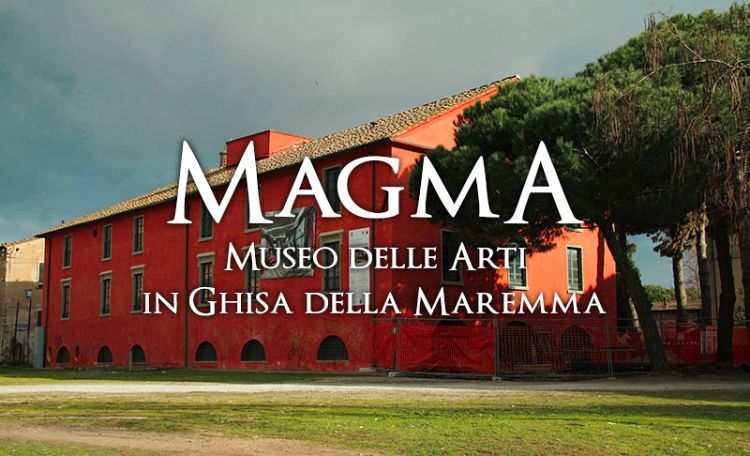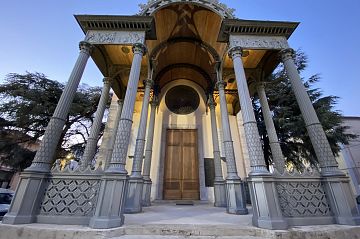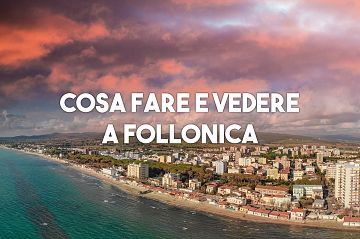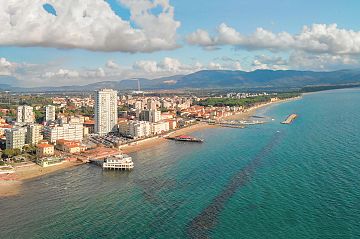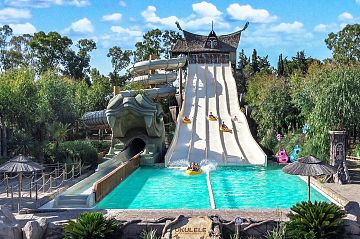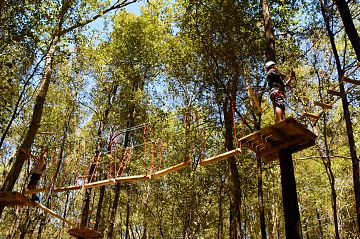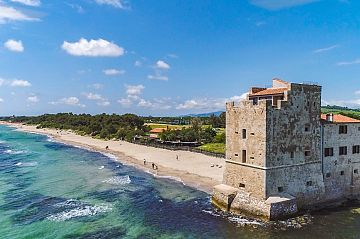MAGMA, the Museum of Cast Iron Arts of the Maremma in Follonica
- Category What to visit in Maremma
MAGMA, discover the cast iron arts of the Maremma in Follonica: historical notes, set-up, timetables, useful info.
Number of views: 3722Agriturismo - Where to stay overnight
- MAGMA, the art museum in Follonica and the entrance to the Metalliferous Hills Park
- The interior layout at MAGMA, what's inside the museum?
- First Floor - Art
- Second Floor Floor - The Story
- Basement - The production of iron
MAGMA, the art museum in Follonica and the entrance to the Metalliferous Hills Park
The MAGMA is housed in the restored spaces of the Forno San Ferdinando, the oldest building in the city, the museum is a place magical capable of narrating a story full of ingenuity, art and passion: that of the Italian iron and steel industry.
At MAGMA it is possible to find centuries-old walls and precious artifacts, alongside the most advanced multimedia technologies, capable of accompanying the youngest and older visitors on a virtual journey to discover an extraordinary monument of < b>industrial archaeology.
The National Technological and Archaeological Park of the Grosseto Metalliferous Hills is among the first thematic centers established in Italy by the Minister of the Environment.
The Park was born from the intention not to disperse the history of mining and metallurgy, which took place in the Maremma over the course of about three millennia and which influenced the determination of its cultural landscape.
The Porte del Parco represent the ideal access point within the territory of the National Park of the Metalliferous Hills of Grosseto.
The gate to the Parco di Follonica can be found in the ticket office of the MAGMA. This serves as a reception desk and infopoint, as well as a computerized documentation center and point for organizing itineraries or guided tours.
The interior layout at MAGMA, what's inside the museum?
The MAGMA narrates the technological, human and artistic history of the iron and steel plant of Follonica at the peak of its production.
We are inside the ex Città Fabbrica, the primitive nucleus around which the current Follonica developed. In the 19th century, the current building of the museum housed an avant-garde smelting furnace for the production of cast iron: the Forno San Ferdinando.
First Floor - Art
Once you have passed the entrance, the large volume that once housed the blast furnace appears and which the recent restoration work has brought to light in all its material form.
In the beginning, this area did not appear in these terms: it was in fact a workplace and in the center stood the large structure of the melting furnace with the chimney at the top for the escape of the fumes.
A cascade of metal plates, arranged with the intention of recreating the exact size of the interior of the melting furnace and characterized by different materials to recall the different loading phases.
In the lower part there are red blades, alluding to the ignition phase; those metal plants recall the mineral that was thrown in layers with the coal inside the oven; finally, in the upper part there are transparent slats to symbolize the smoke that came out of the chimney towards the sky.
The temporary closure of this skylight brings with it a change, which periodically gives life to this installation.
The unmistakable noise of the melting furnace is diffused in the room and the sculpture suddenly becomes incandescent.
The rumble grows and the incandescence gets brighter and brighter, until it becomes white light. Then successively it starts to turn off from top to bottom.
Shadows of men intent on melting appear on the four walls of the oven, almost like ghosts.
Sometimes they are gigantic shadows, in other cases life-size: they represent the reflection of the workers, deformed by the incandescence of the molten iron.
Suddenly, a white stream of red-hot iron begins to descend on the front wall and the walls begin to fill up with incandescent material.
The visitor thus finds himself virtually inside a shape to be forged and thus witnesses the pouring of cast iron. The white flow fills the entire space and begins to cool, first becoming red and then darker and darker.
Still on the wall, shapes appear, and following the formation of some cracks and the collapse of some pieces of material, the cracks increase finally showing what was born following the forging: the city of Follonica.
Second Floor Floor - The Story
The visit proposed by MAGMA then continues on the second floor, with a section dedicated to historical analysis.
The exhibition examines the resources of the Follonica area and the system of flows of energy, men, raw materials and technologies that characterize the factory.
It is possible to understand the success of an industrial structure only through the complex system of relationships that bind it to its territory.
The MAGMA is housed inside a former factory-city, a historical place of the Italian steel industry.
Here, the production of iron and cast iron artifacts flourished for decades, which served to decorate public places and private homes throughout Italy.
The establishment of Follonica developed at its maximum in the 1800s and the buildings located within this area were once connected to the processing of iron ore.
Already at the time of the Etruscans, in the sixth century. BC, iron ore from the Island of Elba was worked, and the geographical position of Follonica, close to the Island of Elba, rich in iron, woods and streams, was strategic for producing energy and coal necessary for the operation of the furnaces.
The factory-city was born by the will of Leopold II, Grand Duke of Tuscany, who so loved these places, once unhealthy due to marshes and malaria.
It was he who began a reclamation work in the Maremma in 1831 and thanks to him Follonica soon became the most important center for the sorting of Tuscan iron.
An artistic foundry was also born here, accompanied by a school of ornamentation and design from which real works of art came which in the first half of the 19th century were exported throughout Italy. For example, the balustrade of the Florence cathedral and the small columns of Piazzale Michelangelo.
The foundries of Follonica slowly went into decline following the birth of the new center located in Piombino. It all ended with the closure of the factories in 1960.
Basement - The production of iron
In the basement of MAGMA, there is a highly suggestive space that shows the true core of the work.
A long walkway re-proposes the passage that led to the heart of San Ferdinando, opening spaces restored to their former beauty thanks to a careful and lengthy restoration.
The itinerary highlights the complexity of the iron and steel process, highlighting the processing phases of the material, necessary to obtain the finished product.
On the back wall, a video projection opens the doors of a modern foundry, with the aim of showing the fusion process that leads from the model to the cast iron casting. To do this, use as an example a cast of the model of the crossed dolphins, featured on display on the first floor.
Proceeding, there is a large water wheel, faithfully reconstructed according to the available documents which helps to understand how the hydraulic energy was exploited for the operation of the blowing machine that fed the fusion.
An interactive panel with the Fusion game allows everyone to try their hand at iron smelting, calibrating the loading of the furnace firsthand to obtain perfect cast iron.
Finally, we meet the video testimony of some of the former workers of the Follonica plant, to whom it is possible to ask a few different questions to construct a personal interview on the last years of activity of the foundry.

